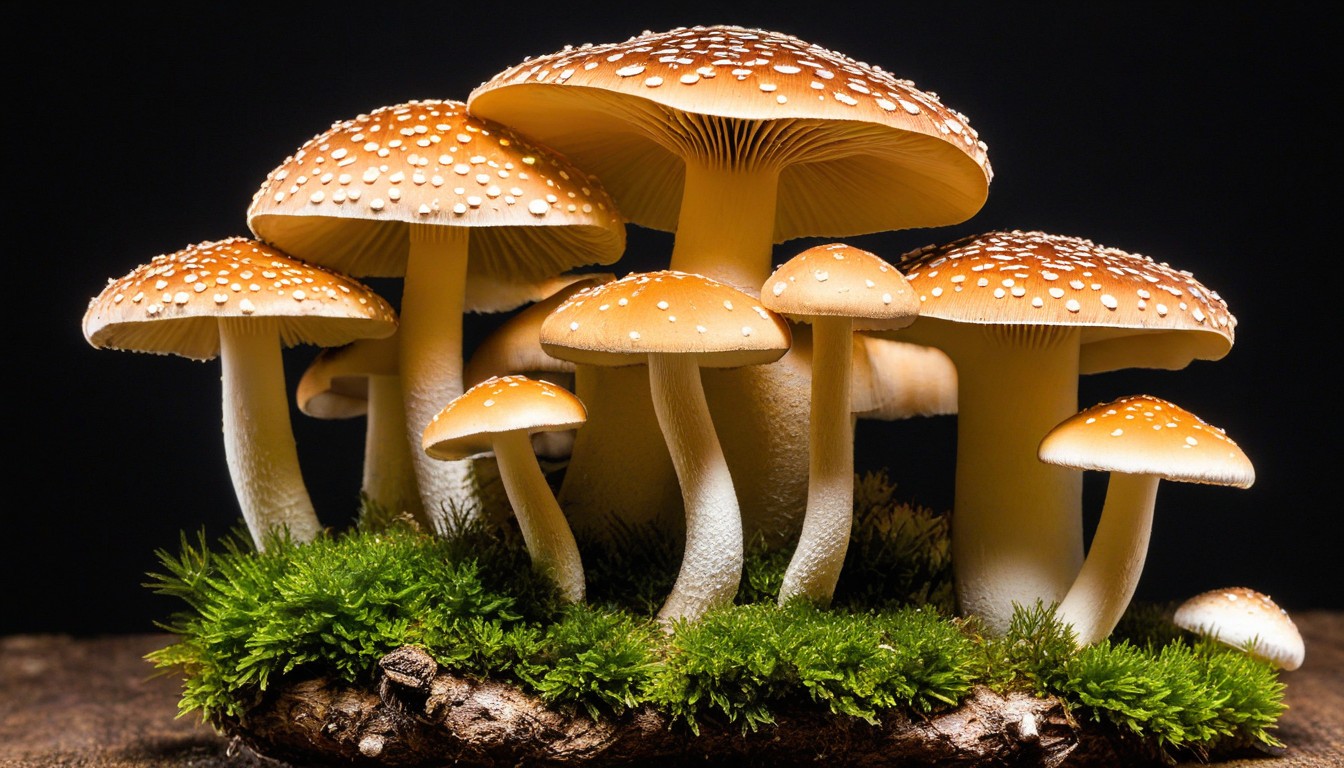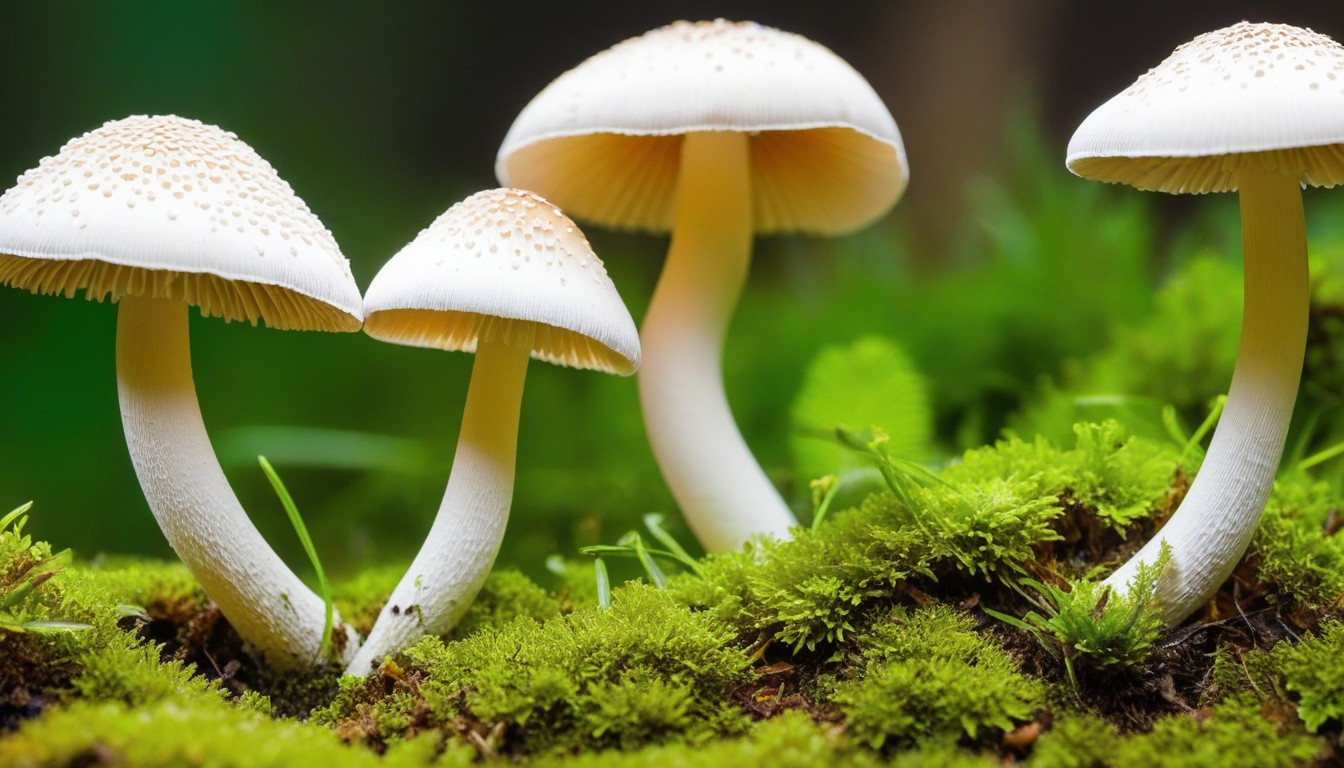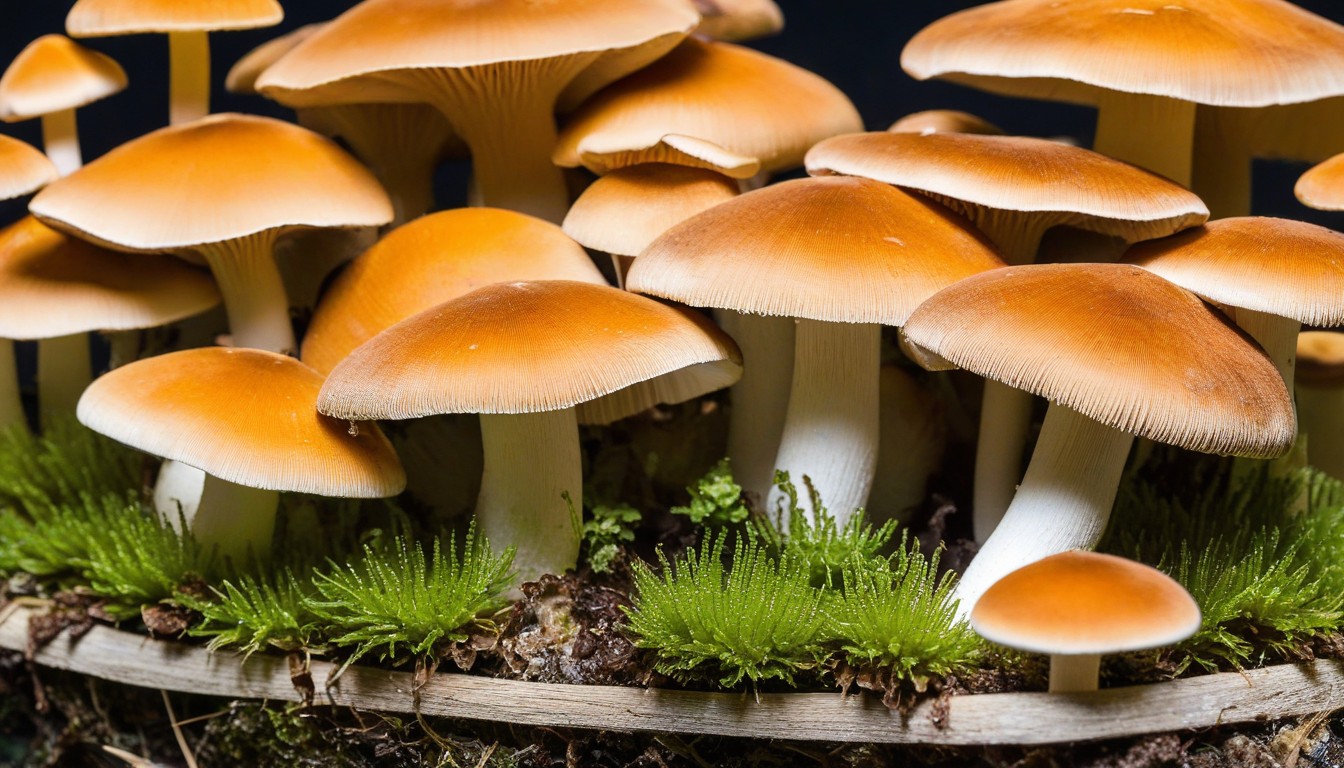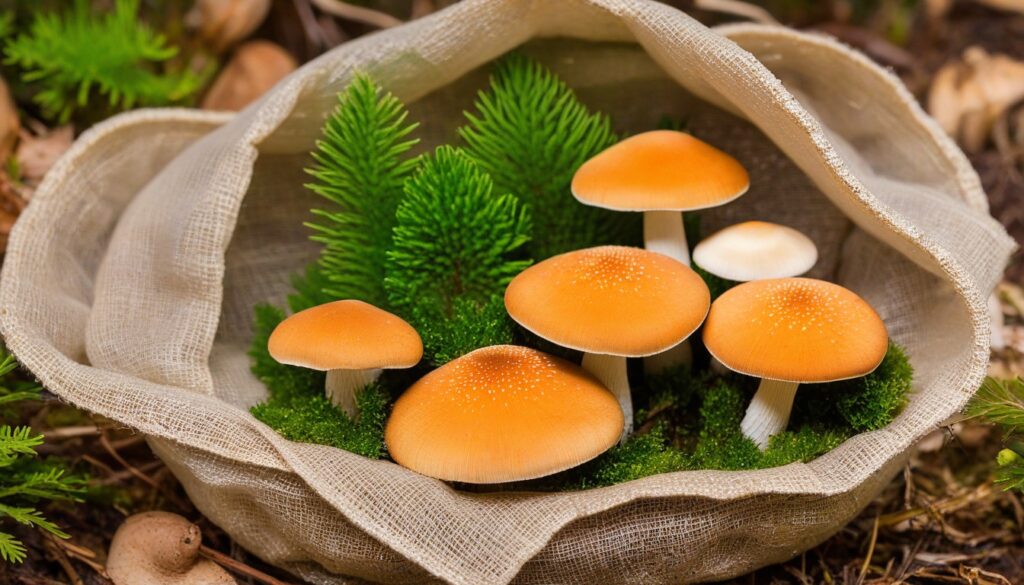If you’re looking to cultivate mushrooms successfully, it’s essential to understand how to sterilize substrate. By following the proper techniques, you can ensure maximum yield and minimize the risk of contamination.
In this comprehensive guide, we’ll take you through a step-by-step process of sterilizing substrate for mushrooms. You’ll learn about the different sterilization methods, necessary equipment and supplies, and maintaining sterility throughout the process.
Key Takeaways:
- Sterilizing substrate is crucial for successful mushroom cultivation
- Proper preparation and sterilization techniques help to limit contamination
- Choosing the right substrate is essential for optimal mushroom growth
- Maintaining sterility throughout the process is critical for yield
- Post-sterilization care is necessary for mycelium colonization
Understanding the Importance of Sterilizing Mushroom Substrate
If you’re new to mushroom cultivation, you may wonder why sterilizing the substrate is so essential. The truth is, fungi thrive in environments that are also conducive to bacterial and fungal growth. Therefore, unless you eliminate any contaminants, you risk the growth of competing organisms that can cause issues such as:
- Reduced yields
- Poor quality mushrooms
- Complete crop failure
Contaminated substrates can also pose a risk to human health, as certain bacteria and fungi can cause infections. Therefore, effective sterilization is paramount to both the quality and safety of your mushroom crop.
Another factor to consider is that different mushroom species have unique requirements for growth. Creating a sterile environment allows you to control the conditions your mushrooms grow in, ensuring optimal yield and quality.
Overall, sterilizing mushroom substrate is essential for successful mushroom cultivation. By implementing the sterilization techniques outlined in this guide, you can ensure a sterile growing environment and maximize your chances of a successful harvest.
Choosing the Right Substrate for Mushroom Cultivation
Choosing the right substrate is a crucial step in mushroom cultivation. The substrate provides the necessary nutrients and environment for the mycelium to grow and produce mushrooms. There are several types of substrates to choose from, including:
|
Substrate |
Description |
Commonly Used For |
|---|---|---|
|
Straw |
Dried, shredded cereal plant stalks |
Oyster, shiitake and button mushrooms |
|
Sawdust |
Waste product from wood processing |
Shiitake, oyster and lion’s mane mushrooms |
|
Wood |
Logs or branches from deciduous trees |
Shiitake and oyster mushrooms |
|
Manure |
Dried, composted animal feces |
Agaricus bisporus (button mushrooms) |
Before selecting a substrate, it’s essential to consider the specific requirements of the mushroom species you plan to grow. Some mushrooms grow better on certain substrates than others, and using the wrong substrate can lead to lower yields, contamination, and poor quality mushrooms.
When selecting a substrate, also consider availability, cost, and ease of preparation. Some substrates, such as straw and sawdust, are readily available and relatively inexpensive. Others, such as manure, may be harder to find and more expensive.
In conclusion, choosing the right substrate is a critical aspect of mushroom cultivation. Consider the specific requirements of your chosen mushroom species, as well as availability, cost, and ease of preparation when selecting a substrate. With proper substrate selection and preparation, you will be well on your way to growing high-quality mushrooms.
Equipment and Supplies Needed for Substrate Sterilization
Proper equipment and supplies are essential for successful substrate sterilization. Here are the items you will need:
|
Equipment |
Supplies |
|---|---|
|
Pressure cooker or autoclave |
Mushroom substrate |
|
Timer or stopwatch |
Distilled water |
|
Heat source |
Vermiculite |
|
Thermometer |
Perlite |
|
Aluminum foil or filter patch bags |
Petri dishes |
|
Surgical gloves |
Isopropyl alcohol |
|
Surgical mask |
Clean cloth or paper towels |
It’s important to note that the equipment you choose will depend on the sterilization method you use. Pressure cookers are suitable for small batches of substrate, while autoclaves are better for more substantial amounts. Additionally, always use surgical gloves and a mask to prevent contamination.
Preparing the Substrate for Sterilization

Before beginning the sterilization process, it’s crucial to prepare your substrate correctly. Proper preparation can help ensure that your mushrooms grow to their full potential, with minimal risk of contamination.
Here are the essential steps for preparing your substrate:
- Clean the substrate: Before preparing your substrate, ensure that it’s free of any debris or contaminants. You can use a clean, damp cloth to wipe down the container and remove any loose particles.
- Hydrate the substrate: Mushrooms need a moist environment to grow properly. To ensure that your substrate is adequately hydrated, add the required amount of water to your substrate and mix it thoroughly. The mixture should feel damp, but not sopping wet.
- Formulate the substrate: Different mushroom species require different substrates. Choose a substrate that’s appropriate for your mushroom species and mix it according to the manufacturer’s instructions.
Once you’ve completed these steps, your substrate is ready to be sterilized.
Sterilization Methods for Mushroom Substrate
Sterilizing the substrate is a critical step in successful mushroom cultivation. In this section, we will discuss the different sterilization methods available for mushroom substrate. Each method has its advantages and disadvantages, and it’s essential to choose the right one for your specific needs.
Pressure Cooking
Pressure cooking is a common method used for sterilizing mushroom substrate. It involves placing the substrate in a container, adding water, and then cooking it under high pressure for several hours. This method is effective in killing most bacteria and fungi, but it can be time-consuming and requires specialized equipment.
Steam Sterilization
Steam sterilization is another popular method for sterilizing mushroom substrate. It involves using a pressure cooker or sterilization chamber to expose the substrate to high-temperature steam for a specific time. This method effectively kills most contaminants, but it can be challenging to achieve the right temperature and pressure levels without a suitable device.
Autoclaving
Autoclaving is a highly effective method for sterilizing mushroom substrate. It involves exposing the substrate to high-pressure steam in a specialized autoclave machine for a specific time. This method can achieve sterilization in a relatively short time but requires specialized equipment and can be costly.
Microwave Sterilization
Microwave sterilization is a newer method of sterilizing mushroom substrate. It involves placing the substrate in a microwave-safe container and exposing it to high-intensity microwave radiation. This method can be faster than other sterilization methods but requires specialized equipment and can be challenging to achieve consistent results.
Ultimately, the sterilization method you choose will depend on factors such as your available equipment, the size of your operation, and your budget. It’s essential to choose a method that is effective in killing contaminants while minimizing the risk of damage to the substrate.
Step-by-Step Guide to Sterilizing Mushroom Substrate

Now that you have all the necessary equipment and supplies, it’s time to sterilize your mushroom substrate. Follow these steps carefully to ensure successful sterilization:
- Prepare your sterilization equipment by filling the pressure cooker or autoclave with water according to the manufacturer’s instructions.
- Place your substrate in heat-resistant bags or jars and seal them tightly.
- Load the bags or jars into the sterilization equipment.
- Close the lid of the sterilization equipment and turn on the heat source to initiate the sterilization process.
- Once the sterilization temperature is reached, start timing the process according to your chosen sterilization method.
- After sterilization is complete, turn off the heat source and allow the equipment to cool down.
- Carefully remove the bags or jars from the sterilization equipment and place them in a clean, sterile environment to cool down further.
- After cooling, the substrate is ready for inoculation with mushroom spores or mycelium.
Remember to maintain sterility throughout the process, especially during the cooling and inoculation stages.
Pro Tip: It’s always a good idea to do a test run with a small batch of substrate before scaling up to larger quantities. This way, you can ensure that your sterilization technique is effective and identify any issues before investing in a larger batch.
Maintaining Sterility during Substrate Cooling and Inoculation
Maintaining sterility is essential to prevent contamination during the critical stages of substrate cooling and inoculation. Here are some tips to ensure the success of your mushroom cultivation process:
- Use a sterile environment: Before handling the sterilized substrate, ensure that the environment is free from contaminants. You can use a cleanroom or create a makeshift sterile environment by using a laminar flow hood.
- Wear gloves and a mask: Wear gloves and a mask during the cooling and inoculation stages to prevent contamination from your hands and breath.
- Cool the substrate quickly: After sterilization, cool the substrate quickly to room temperature to prevent bacterial growth. You can place the container with the substrate in a cool water bath or use a cooling unit.
- Inoculate using aseptic techniques: Inoculate the sterilized substrate using aseptic techniques, such as using a flame-sterilized needle. Inoculate the substrate immediately after cooling to prevent any bacteria or fungi from colonizing the substrate.
- Monitor the inoculation: Monitor the inoculated substrate for any signs of contamination. If you see any signs, such as discoloration or unusual growth, remove the contaminated substrate immediately.
By following these tips, you can maintain sterility during substrate cooling and inoculation, reducing the risk of contamination and ensuring a successful mushroom cultivation process.
Post-Sterilization Care for Mushroom Substrate

Once you have successfully sterilized your mushroom substrate, it’s crucial to take appropriate measures to maintain its sterility. Failing to do so could lead to contamination and compromise your mushroom cultivation efforts. Follow these post-sterilization care guidelines to ensure optimal substrate maintenance:
- Handle with clean hands: Always wash your hands before handling the sterile substrate. Use gloves whenever possible.
- Store in a clean environment: Transfer the sterilized substrate to a clean, sterile container, or seal it in a sterile bag.
- Ensure proper storage conditions: Store the substrate in a cool, dry place away from direct sunlight. Avoid exposing it to temperature extremes, moisture, or contaminants.
- Monitor for contamination: Regularly inspect the substrate for any signs of contamination, such as mold, unusual discoloration, or foul odor. If you detect any issues, take appropriate action immediately.
- Prepare for inoculation: Allow the substrate to cool and stabilize before inoculating it with mushroom spores or mycelium. Keep it in a clean, controlled environment during this stage to prevent contamination.
Adhering to these post-sterilization care guidelines will help maintain the sterility of your mushroom substrate and create optimal conditions for successful mycelium colonization. Proper substrate maintenance is a critical part of the mushroom cultivation process and should not be overlooked.
Troubleshooting Common Issues in Substrate Sterilization
Despite following the sterilization process diligently, issues can still arise. Here are some common problems that may occur during substrate sterilization and how to troubleshoot them:
Contamination
Contamination is a common problem during substrate sterilization that can ruin your yield. The best way to avoid contamination is to maintain a clean workspace and ensure proper equipment sterilization. However, if contamination occurs, there are a few steps you can take to troubleshoot the issue:
- Identify the source of contamination: Contamination can come from various sources, including contaminated water, poor-quality substrate, or contaminated equipment.
- Remove contaminated substrate: If you notice any contaminated areas or mold growth on the substrate, remove them immediately to prevent further contamination.
- Isolate the affected area: If the contamination is extensive, isolate the affected area and use a sterilized cutting tool to remove the contaminated substrate carefully.
- Restart the sterilization process: After removing the contaminated substrate, re-sterilize the remaining substrate using the same sterilization method and equipment.
By following these steps, you can prevent contamination from ruining your yield.
Inconsistent Temperature
Inconsistent temperature during sterilization can result in incomplete sterilization, leading to contamination and a lower yield. Here are some steps you can take to troubleshoot inconsistent temperature:
- Calibrate your equipment: Ensure that your equipment is calibrated correctly before use to ensure accurate temperature readings.
- Monitor the temperature constantly: During the sterilization process, monitor the temperature regularly to ensure it remains constant.
- Adjust pressure and heat settings: If the temperature is inconsistent, adjust the pressure and heat settings of the equipment according to the manufacturer’s instructions.
- Restart the sterilization process: If the temperature is significantly inconsistent, restart the sterilization process from the beginning.
By troubleshooting inconsistent temperature, you can ensure complete sterilization and a higher yield.
Incorrect Substrate Formulation
Incorrect substrate formulation can lead to low yields and poor-quality mushrooms. Here are some steps you can take to troubleshoot substrate formulation:
- Review the substrate recipe: Double-check the substrate recipe and ensure you are using the correct ingredients in the right proportions.
- Adjust moisture content: If the substrate is too dry or too wet, adjust the moisture content by adding or removing water.
- Consider substrate supplements: If the substrate is not producing quality mushrooms, consider adding supplements like gypsum, coffee, or bran.
- Experiment with different substrate recipes: If the substrate continues to produce low-quality mushrooms, experiment with different substrate recipes until you find the right one for your mushroom species.
By troubleshooting substrate formulation, you can produce higher quality mushrooms with better yields.
Best Practices for Sterilizing Substrate for Mushrooms

Sterilizing substrate for mushrooms requires careful attention to detail to ensure the best results. In this section, we will discuss the best practices for substrate sterilization to help you achieve optimal yields and reduce the risk of contamination.
Use High-Quality Substrate
The quality of the substrate used directly affects the success of the sterilization process. Ensure you use high-quality substrate that is free from contaminants and organic matter that can cause contamination during sterilization.
Cleaning and Disinfecting Equipment
Thorough cleaning and disinfecting of the equipment before sterilization are crucial to prevent contamination. Use a disinfectant solution on all equipment, including jars, lids, and other hardware that will come into contact with the substrate.
Consistency in the Sterilization Process
To achieve consistent results, it’s crucial to maintain a consistent sterilization process. Ensure that you follow the chosen sterilization method and temperature throughout the process. Any deviation from these conditions may result in contamination.
Monitoring the Sterilization Process
Monitoring the sterilization process helps to detect any issues and adjust accordingly. Use a thermometer to monitor the temperature of the substrate, and time the sterilization process using a timer. This will help you identify any inconsistencies in the sterilization process and address them promptly.
Proper Cooling of the Substrate
After sterilization, the substrate must be allowed to cool to room temperature before inoculation. Proper cooling helps to prevent condensation and contamination during inoculation. Cool the substrate in a clean area, away from other potential sources of contamination.
Storage of Sterilized Substrate
Proper storage of sterilized substrate helps to prevent contamination and ensure the substrate remains sterile until inoculation. Store the substrate in a clean and dry area away from other contaminants. Label the storage containers with the substrate type and sterilization date.
Documenting the Process
Keeping detailed records of the sterilization process is essential for troubleshooting any issues that may arise. Document the substrate type, sterilization method, sterilization temperature, and cooling time. This information will help you identify any issues and improve the sterilization process in the future.
By following these best practices, you can ensure optimal yields and reduce the risk of contamination in the sterilization process.
Conclusion
There you have it, a comprehensive guide on how to sterilize substrate for mushrooms step-by-step. With the knowledge and techniques shared in this article, you are now equipped with the necessary tools to maximize your mushroom yield while minimizing the risk of contamination.
Start Your Mushroom Cultivation Journey With Confidence
The importance of sterilizing mushroom substrate cannot be overstated, and we hope that this guide has been helpful in understanding why it’s crucial and the steps involved. Remember to choose the right substrate, ensure you have the necessary equipment and supplies, and follow the sterilization process correctly.
Best Practices for Success
To make your sterilization process even more successful, remember to practice these best practices:
- Keep your work area clean and organized
- Use clean tools and equipment
- Follow strict hygiene practices
- Regularly monitor and maintain optimal environmental conditions
Happy Mushroom Cultivation!
We wish you all the best in your mushroom cultivation journey and hope that this guide has been a helpful resource for you. Remember to troubleshoot any issues that may arise, maintain sterility, and follow best practices for optimal results. Happy growing!
FAQ
Why is sterilizing substrate important for mushroom cultivation?
Sterilizing substrate is crucial to eliminate potential contaminants that can hinder mushroom growth. It creates a favorable environment for mushroom mycelium to thrive and reduces the risk of contamination.
How do I choose the right substrate for mushroom cultivation?
The choice of substrate depends on the mushroom species you are cultivating. Different mushrooms have specific substrate preferences, such as straw, sawdust, or wood chips. Research the requirements of your chosen mushroom species to select the appropriate substrate.
What equipment and supplies do I need for substrate sterilization?
Essential equipment for substrate sterilization includes a pressure cooker or autoclave, heat-resistant bags or jars, a thermometer, and gloves. Additional supplies may include a heat source, filters, and cleaning agents.
How do I prepare the substrate for sterilization?
The preparation process for substrate sterilization involves cleaning, hydration, and formulation. Clean the substrate to remove any debris or competing organisms, hydrate it to the appropriate moisture level, and formulate it by adding necessary supplements to enhance mushroom growth.
What are the different methods of substrate sterilization?
Common methods of substrate sterilization include pressure cooking, steam sterilization, and using an autoclave. Each method has its advantages and disadvantages, and the choice depends on the available equipment and the specific requirements of your mushroom species.
Can you provide a step-by-step guide for sterilizing mushroom substrate?
Yes, we have a detailed step-by-step guide on sterilizing mushroom substrate using the chosen method. It covers everything from preparing the equipment to monitoring the sterilization process to ensure optimal results.
How can I maintain sterility during substrate cooling and inoculation?
Maintaining sterility during substrate cooling and inoculation is crucial to prevent contamination. It involves working in a clean and controlled environment, using sterilized tools and containers, and taking necessary precautions to minimize the introduction of contaminants.
What should I do for post-sterilization care of mushroom substrate?
After sterilization, handle the sterile substrate carefully to maintain its sterility. Store it in a clean and controlled environment, ensuring proper moisture levels and ventilation. Create optimal conditions for mycelium colonization by maintaining the right temperature and humidity.
What are some common issues in substrate sterilization, and how can I troubleshoot them?
Common issues in substrate sterilization include contamination, inadequate sterilization, and improper moisture levels. Troubleshoot these problems by identifying the source of contamination, adjusting sterilization parameters, and ensuring proper substrate hydration.
Are there any best practices for sterilizing substrate for mushrooms?
Yes, experienced mushroom cultivators follow certain best practices for substrate sterilization. These include maintaining cleanliness throughout the process, using high-quality ingredients, monitoring sterilization parameters, and implementing proper hygiene practices.

